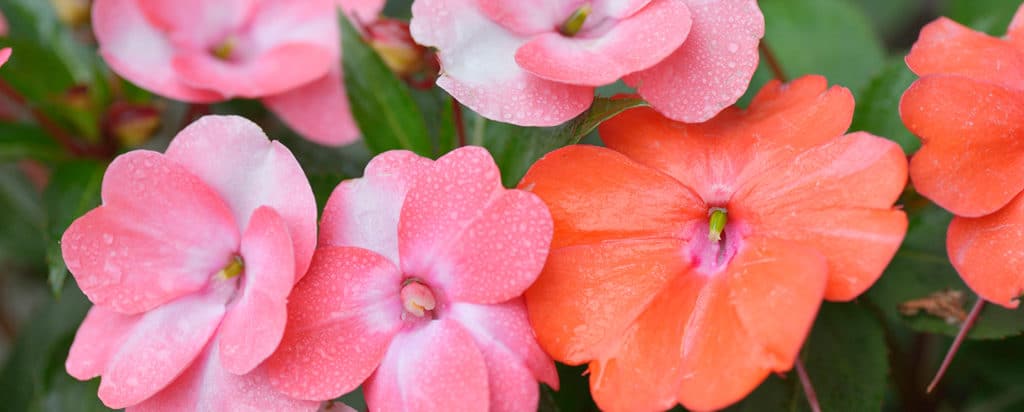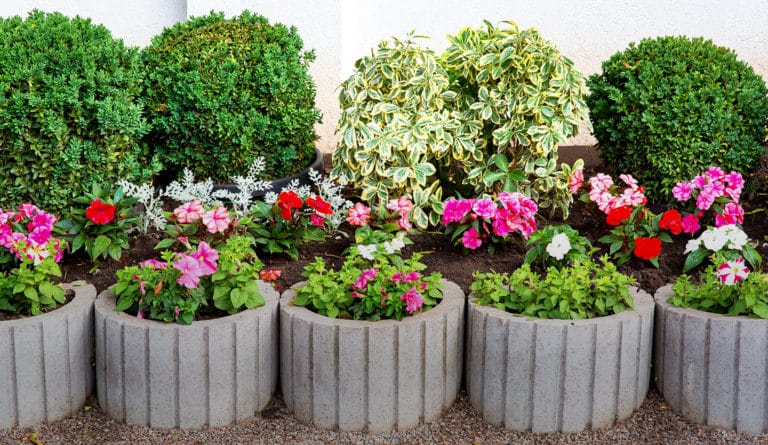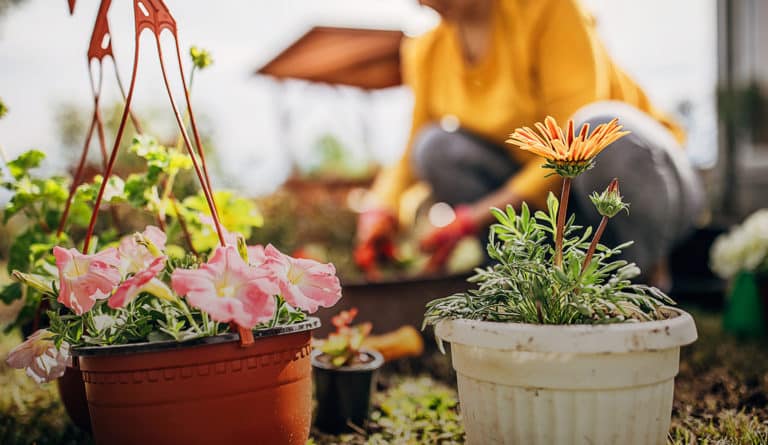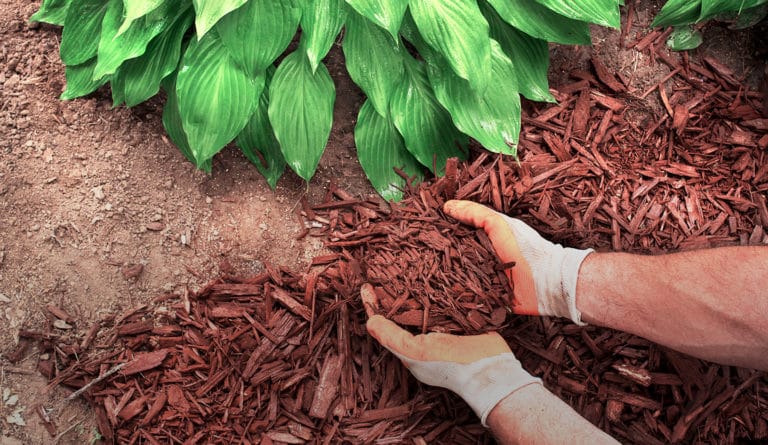
impatiens
aka impatiens walleriana
Bright, colourful and fast growing, in even the shade. Impatiens have the power to pretty things up nearly everywhere. Garden beds, planter boxes and even hanging baskets.
variations
Standard impatiens: Impatiens walleriana New Guinea impatiens: Impatiens hawkeri
light
shade or partial sun
Unlike most flowers, Impatiens grow well in shady conditions. The exception are the New Guinea varieties that prefer partial sun. If you can, pick a spot that’s protected from the wind.
water + feeding
thirsty
They like moist soil so keep the water coming. Two inches a week is a general rule. That’s an hour of sprinkler time if there’s no rain. Be careful not to overwater. Long periods of wet soil encourages mold and rot. A layer of mulch helps the soil retain moisture and protect impatiens from wilting in summer heat. Impatiens in containers need more regular watering than ones planted in your garden.
toxic
non-toxic
safe for people and pets.
size
really small to small-ish
Dwarf varieties only grow 6 inches. While bigger types can grow to 2 feet high with the proper care.
pro tip
dead heads
“Dead head” your Impatiens for continuous blooms. When you see a blossom start to brown and wither, pinch it off and toss it in your yard waste. This will encourage the plant to make more beautiful new flowers.
fun fact
so sweet!
In many cultures, Impatiens are symbolic of motherly love. But there are some cultures where the flower represents impatience, because the plant eagerly disperses seeds.


beyond the basics
-
soil & potting
Grow impatiens in nutrient-rich soil with good drainage. Adding peat moss to clay soil will help. If you’re planting in a container such as a window box or hanging basket, use a good-draining potting soil like Miracle-Gro® potting mix.
Enrich your soil with nutrients. Fertilize your soil with aged compost before planting. This organic matter will provide your impatiens the extra nutrients they need to thrive.
Plant food makes a big difference. Add a slow-release granular plant food at planting time, like Miracle-Gro® Shake ‘n Feed All Purpose Plant Food. Throughout the growing season, add a water-soluble plant food every two weeks such as Miracle-Gro® Water Soluble Bloom Booster. Use a water-soluble plant food every two weeks according to the instructions. You can also reapply the slow-release plant food midway through the season. Let’s boost those blooms!
Planting Impatiens close together encourages them to grow taller. Space them about six inches apart. Not any closer, because the crowding could encourage mold to grow. If you want your Impatiens to act like more of a sprawling ground cover, space them further apart, about a foot.
-
companion planting
Impatiens are good in a veggie garden because their cheery flowers attract pollinators. They also make excellent companions for other plants and flowers like Asparagus fern, Begonias, Bacopa, Coleus, Fuchsia, Sweet potato vine and White Baby’s Breath.
-
blooms
Impatiens provide a bounty of brightly colored blooms, even in shady areas. Colours include white, red, pink, violet, coral, purple, and yellow.
-
pest control
Impatiens are fairly pest resistant, but you may get Aphids (yellowish-green clusters of small insects) or Red Spider Mites (tiny red bugs and white dusty substance under leaves). Fight these pests with a gentle insecticide like Ortho® Bug B Gon ECO Insecticidial Soap. For prevention, try planting aromatic herbs nearby, like chamomile, garlic or rosemary.

troubleshooting
-
what’s with the shrivelling blooms?
Impatiens blooms do have a life cycle and wilt naturally, but if all the blooms go suddenly at the same time, it’s probably a combination of too much heat and sun, and not enough water. Impatiens prefer shady, partial sun locations that shield them from peak daytime sun. Impatiens transplant well if you use lots of water, so move them to a shadier space.
-
why are my plants wilting?
Not enough water. Impatiens want consistently moist soil that doesn’t get soggy. Leaf drop and bud drop are other signs of drought stress.
-
what are these ringed spots?
Probably the Impatiens Necrotic Spot Virus. This incurable virus is spread by bugs known as Thrips. Unfortunately, there is no treatment. Stop the spread by uprooting and tossing the plant in a yard waste bag. Once it’s contained you can start over.
-
why is there powdery white stuff on the leaves?
It’s probably Downy Mildew, which can causes leaves to shrivel. It begins as a yellow or white stippling on the underside of the leaves. Prune infected leaves on generally healthy plants, and remove badly infected plants entirely. For maintenance, keep your beds clear of damp, rotting plant material.



